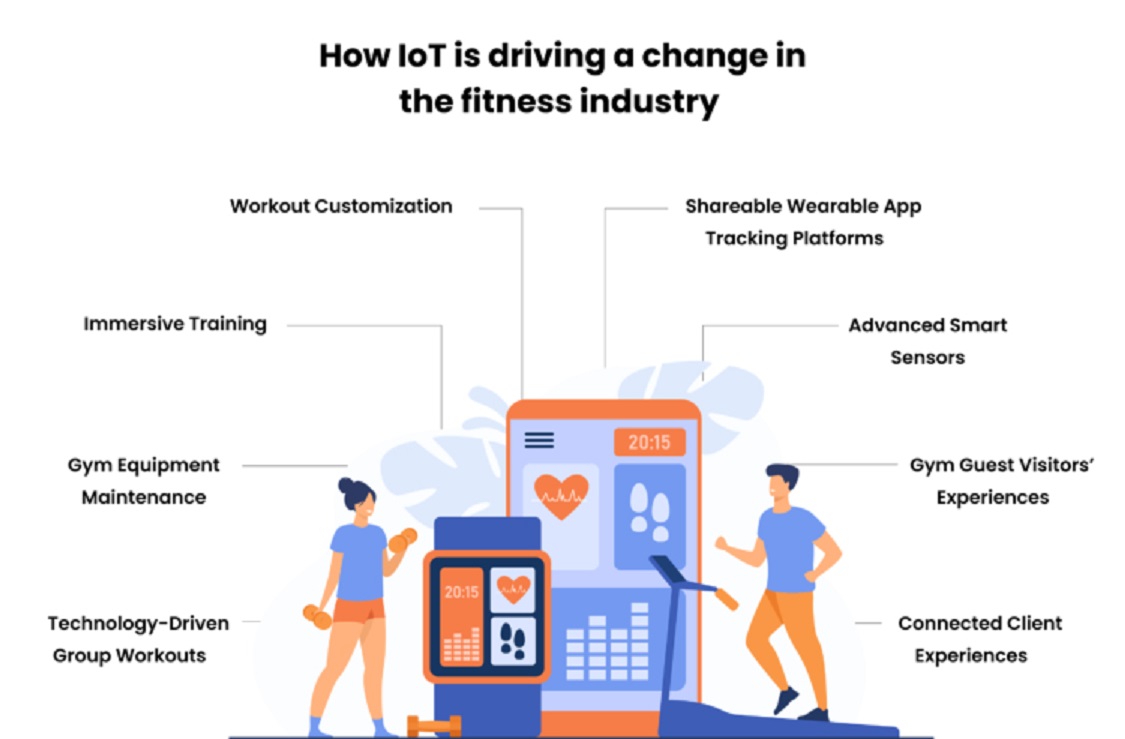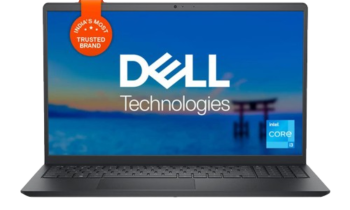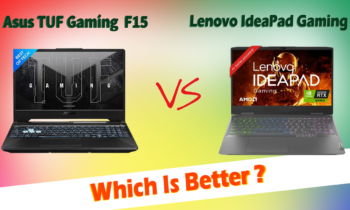Once upon a time, the IoT was a revolutionary concept. Upgrading any area of human activity or making any business more appealing to clients is a prevalent practice today.
Companies have increasingly used this technology in sports over the past decade, and it remains cutting-edge today. By 2020, there will be about 133 million IoT units dedicated to wellness and sports in the European Union, up from 68.4 million in 2017. In 2025, it is expected to have risen to over 170 million.
Customers’ tastes and expectations are evolving in tandem with the expanding capabilities of the Internet of Things (IoT) in the sports and fitness industries.
Companies who want to be successful in this sector must master the art of using sports technology to not only keep up with customer demands but also exceed them. If you want to develop IoT software, you get in touch with the best IoT Development Company in Dubai.
Therefore, how can companies deliver unique value to customers using the Internet of Things in health and sports? Let’s learn more about this technology’s potential and examine the most groundbreaking Internet of Things applications in sports and exercise.

Fitness and sports IoT applications
Internet of Things (IoT) devices come in various shapes and sizes and are used in multiple professional and recreational sports. This technology can significantly improve efficiency and productivity by collecting, evaluating, and keeping tabs on user information.
Let’s look at the cutting-edge IoT applications in the fitness and athletics industries.
Wearables
Many people now consider fitness trackers and smartwatches indispensable accessories for their daily lives. They help people stay busy and reflect on their daily habits and physical well-being.
However, more than measuring activity and heart rate is required to meet consumer demands. Wearable technology has advanced greatly in recent years. For instance, the newest Apple Watch models include sensors that test blood oxygen levels, keep tabs on sleep patterns, and even provide an electrocardiogram.
We want to draw attention to alternate Internet of Things (IoT) possibilities for keeping tabs on one’s health or monitoring athletic performance. These are among the most forward-thinking solutions, and they could pave the way for other companies to explore new avenues of Internet of Things deployment.
What else can we expect from wearables?
Muscles need further training
Elite athletes and gym rats frequently encounter obstacles when attempting to improve their muscle strength or size. MPower has designed a pod that can be worn around the targeted muscle region to monitor various useful indicators and streamline the procedure.
It measures things like muscle reaction, activation levels, and exhaustion rates in real time using cutting-edge Internet of Things (IoT) sensors. Because you can tailor your workouts to your specific needs, you will see greater results from your muscle-building efforts.
Help people adopt a better posture
Another area for improvement in the twenty-first century is slouching. People’s backs bend unhealthily when hunched over phones, computers, or other devices. In addition to causing back and neck pain, this can lead to other serious health issues.
Lumo Lift is a small wearable device that employs Internet of Things (IoT)-powered sensors to alert you when you’re slouching. This wearable reminds you to watch your posture with a gentle vibration throughout the day.
Take away any roadblocks in keeping track of progress
It can be not easy to keep tabs on professional and amateur swimmers’ development as they train. With a regular fitness tracker, you have to pause your workout every few strokes to look at your wrist.
The XMetrics Pro Swim Tracker is a device that can be clipped onto a swimmer’s goggles to provide real-time aural feedback on various metrics, such as lap count, turn count, stroke count, and efficiency. The device has connected coaching to help you quickly and efficiently improve your skills.
Facilitate expert education
IoT-enabled gadgets also make an impact in the world of professional sports. The Catapult Player Smart Football Tracker is designed specifically for football players and may greatly enhance their individual and collective performance. The official FIFA device tracks players’ velocity, total and sprint distance, and other statistics. Users also have access to performance-enhancement training developed by expert trainers. The technology may also be used to monitor the entire team’s performance, which should lead to improved teamwork.
Smart fitness devices may help customers with physical health and self-training, but they can’t substitute routine checkups or visits to a professional. I hope these illustrations have motivated you to contribute to the growth and enjoyment of the sports and fitness industries.
Fitness apps
There has been a meteoric surge in the fitness app development industry thanks to the Internet of Things. The number of people interested in fitness apps has risen dramatically, from 68.7 million in 2019 to an expected 87.4 million in 2020, mostly due to the COVID-19 epidemic. This trend is still present in modern times.
There is a wide variety of forms and functions among fitness apps. In sports and fitness, these services may include tailor-made routines, meal plans and trackers, calorie counting, nutrition plans, classes in yoga and meditation, and more.
By integrating with your smartwatch or fitness tracker, fitness apps may provide you with a comprehensive training plan and take advantage of IoT in the realm of fitness.
If you’re looking for a top-tier fitness app, go no further than Nike Training Club. It’s great for people of all fitness levels, as Nike experts tailor their suggestions to each user based on their specific issues and objectives. The app provides users with a wealth of information on improving their health, including workouts using only your body weight, high-intensity interval training, traditional gym equipment, yoga, and more.
Strava is another popular fitness-tracking app. It has the potential to become the app of choice for runners and anybody else seeking exercise inspiration and a supportive online group. Wearable fitness data tracking is simplified by using GPS and the Internet of Things. And nothing can encourage more than consistent tests of your abilities.
Strava understands this; therefore, it offers monthly challenges to motivate its users to stay fit.
Some companies design gadgets and software that accommodate various athletes and sporting events. Garmin Connect is an app for Garmin smartwatches and fitness trackers that allows users to record and analyze data from multiple activities, including paddling. The app gives you an overview of your actions and health daily, month, and year. Options to acquire personalized training plans, coaching tips, and more are also included.
Developers of fitness apps shoulder a heavy burden of accountability for the information they provide. That’s why it’s important for developers only to provide users with reliable information and reassure them that they should talk to their doctors before using the app. Remember that your consumers’ safety and well-being are always your top responsibility.
Networked exercise machines
Some businesses have recently had the bright idea of creating linked sports equipment and gear to bring the Internet of Things (IoT) into the realm of fitness and sports. They broaden their use cases and potential for training, bringing them one step closer to completely replacing traditional in-person tutoring.
Which smart sports clothing and equipment are now available, and what do they do?
Weights
By handling mundane duties like rep counting and safety concerns, modern smart dumbbells allow fitness enthusiasts and pros to focus on their training.
With IoT technology, you can monitor your form and adjust the weights accordingly to avoid injury and get the most out of your workout. Some can change their weight simply by being told to do so with your voice.
Nets for basketball
Modern sports equipment allows for networked coaching choices and the automation of specialized game types. Smart basketball hoops, for instance, can be controlled by a mobile app that keeps scores, tracks stats, and analyzes individual plays.
Exercise equipment like bikes, treadmills, ellipticals, etc.
Modern fitness equipment can replicate a commercial gym at home. Various pieces of equipment serve the same purpose, albeit they all focus on different muscle areas. They allow you to control the difficulty of your workouts, come with various in-built training options, and have a clever design that reduces joint stress during exercise. They may be folded up for convenient portability.
Mirrors
Fitness enthusiasts now have the option to assign the task of perfecting their workout routines to an Internet of Things (IoT)-powered smart mirror rather than focusing on a traditional mirror. It has sensors that track your every move and provide commentary and guidance. Users can program their exercises with this smart fitness gear.
Exercise rugs for yoga
A yoga mat with built-in smarts can serve as a personal trainer. Internet of Things (IoT) mats can lead you to the perfect position, help you maintain your balance, track basic data like your training duration, and even create a custom workout plan.
Customers’ makeshift home gyms can benefit greatly from the addition of networked sports gear and equipment. While beginners are recommended to work with a trainer, fitness aficionados at more advanced levels can benefit from automated equipment.
High-tech clothing and footwear
While the idea of sensor-laden and responsive sportswear may sound like something out of science fiction, it is a viable business opportunity today. The intelligent textiles and garments market is projected to exceed $5 billion by 2025. However, the potential applications of smart clothing and footwear in sports and physical fitness may clarify this.
Clothes can be both cutting-edge and on-trend. The Hexoskin company creates high-tech clothing equipped with Internet of Things (IoT) sensors to track vital signs and other information useful for planning effective exercise and sports sessions. It follows various biometric data, such as the user’s steps, heart rate, calories burned, sleep quality, respiration rate, etc.
Similar functionality may be found in other manufacturers like Sensoria. In addition to the standard metrics, its smart socks can prove useful for runners by assessing potential dangers and providing feedback on potentially harmful running techniques.
Yoga fans now have access to an Internet of Things solution that can improve their practice. It will help if you work with a teacher to get very good at yoga and avoid getting hurt.
However, thousands of practitioners have lost access to in-person mentorship, especially during the pandemic. Nadi X Smart Yoga Pants have sensors to monitor your practice and alert you to bad posture with subtle vibrations.
Shoe technology has also improved. Famous brand sneakers are equipped with step counters, speedometers, and arch supports for a wide variety of sports. Companies like Puma, Nike, and Under Armour have pioneered the industry with their innovative designs and high-quality performance fabrics.
Most wearable Internet of Things devices is located near other smart fitness equipment. In addition to monitoring vital signs and performance in sports, these devices can help users fine-tune their form for enhanced efficiency.
Facility administration
The Internet of Things is useful for athletes and gym rats and in any setting where convenience and aesthetics are paramount.
The Internet of Things can help with facilities management in several ways.
Simplify and automate your life.
The cleanliness of public areas and individual items, the accessibility of hand sanitizers, paper towels, toilet paper, and other necessities, and the status of trash cans are all crucial components of the overall quality of the customer’s experience. With the help of IoT-powered sensors, facilities managers can automate keeping venues clean and secure at all times.
Make a positive impact on the environment and the bottom line
Smart technology keeps tabs on how much power does use and adjusts the heating, cooling, lights, etc. Maximizing energy efficiency and decreasing supplementary costs benefits both the environment and the consumer.
Limit losses
The Internet of Things alerts users to problems including leaks, broken systems, and malfunctioning machinery. Specialists can save time and money by addressing issues at their earliest stages, all without negatively impacting the experience provided to guests.
Automation is essential for the hard work of facility management. Fortunately, we have the technology at our disposal to streamline this procedure and ensure that stadiums have the required degree of cleanliness and comfort for their visitors.
Reactions of Fans
Regarding health and fitness, the focus isn’t only on the individual. The industry would only exist with its dedicated fan base. Without a doubt, modern technology is hard at work improving not just players’ and spectators’ improvement but also the delight of sports fans.
Intelligent stadiums put special emphasis on creating memorable experiences for their patrons. The emotional investment of thousands of fans in each other and their teams’ success makes providing a first-rate stadium experience imperative.
This is why modern sports arenas do fill with cameras and sensors to monitor and enhance the spectator experience in real time. The Internet of Things makes it easy for visitors to find parking, place orders for refreshments directly to their seats, enjoy fair viewing conditions, and feel protected.
The next Olympic Games in Tokyo will set a fantastic example of the effective integration of high-quality IoT technology and virtual reality choices. Using stereoscopic cameras that captured the athletes from multiple panoramic viewpoints, they created a real-time, immersive viewing experience.
The future of major professional sports events will take place in networked stadiums. Innovations based on the Internet of Things will ensure fans’ connectivity, security, and convenience.



